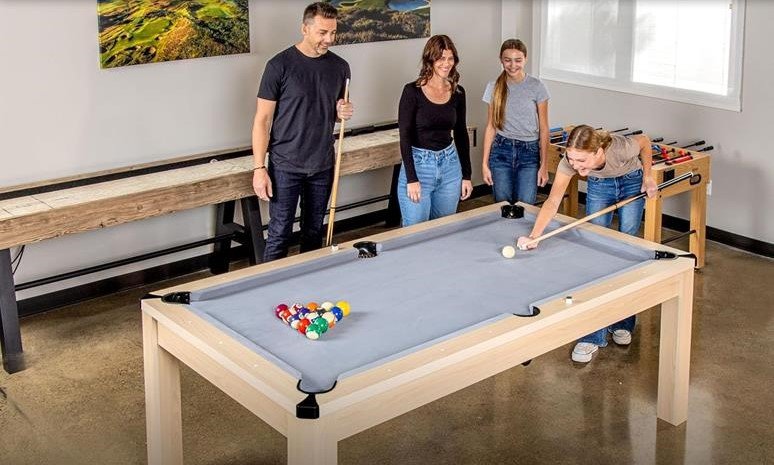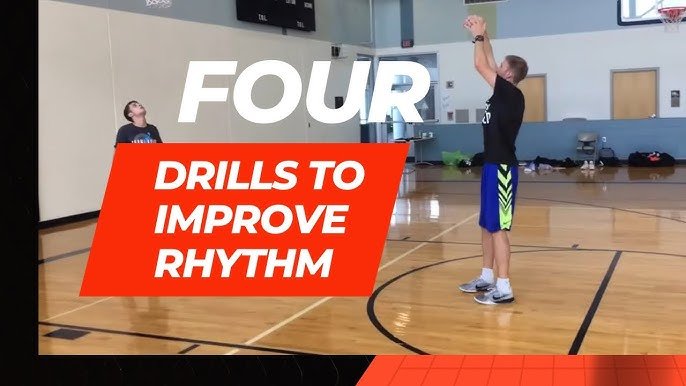Are you dreaming of hitting the trails and exploring the great outdoors on a mountain bike? The thrill of riding through rugged terrain and feeling the rush of the wind is truly exhilarating.
But before you dive into this exciting hobby, you might be wondering: “How much does a good mountain bike cost? ” It’s a crucial question, especially if you’re balancing your passion for adventure with a budget. In this guide, we’ll break down the factors that influence mountain bike prices, helping you make an informed decision without overspending.
Whether you’re a seasoned rider or a beginner, you’ll discover how to find the perfect bike that fits both your needs and your wallet. Stick with us, and you’ll be ready to conquer those trails in no time!

Price Ranges For Mountain Bikes
Mountain bikes come in many price ranges. The cost depends on materials, parts, and brand.
You can find bikes for casual rides or serious trails. Knowing price ranges helps you choose.
Entry-level Bikes
Entry-level mountain bikes usually cost between $300 and $700. They have basic parts and frames.
These bikes work well for beginners and light trail use. They are heavier but still durable.
- Steel or aluminum frames
- Simple suspension systems
- Basic brakes and gears
Mid-range Options
Mid-range mountain bikes cost about $700 to $1,500. They have better frames and parts.
These bikes suit regular riders and moderate trails. They are lighter and more reliable.
- Aluminum or carbon frames
- Improved suspension
- Hydraulic disc brakes
- More gear options
High-end Models
High-end mountain bikes range from $1,500 to $5,000. They use top-quality materials and parts.
These bikes fit serious riders and tough trails. They offer light weight and excellent performance.
- Carbon fiber frames
- Advanced suspension systems
- High-end hydraulic brakes
- Wide gear range
Custom And Professional Bikes
Custom and professional mountain bikes can cost over $5,000. They have specialized parts.
These bikes are made for experts and racers. They include custom frames and cutting-edge technology.
- Hand-built frames
- Custom suspension tuning
- High-performance wheels and tires
- Electronic shifting systems

Factors Influencing Mountain Bike Prices
The cost of a good mountain bike can vary a lot. Different parts and features affect the price.
Understanding these factors helps you choose the right bike for your budget and needs.
Frame Material
The frame material is a big factor in price. It affects the bike’s weight and strength.
Common materials are aluminum, steel, carbon fiber, and titanium. Carbon fiber is the most expensive.
- Aluminum: light and affordable
- Steel: strong but heavier
- Carbon fiber: very light and strong, pricey
- Titanium: light, strong, and rare
Suspension Types
Suspension helps absorb shocks on rough trails. It changes how much the bike costs.
There are hardtail and full suspension bikes. Full suspension costs more because it has more parts.
- Hardtail: front suspension only, less expensive
- Full suspension: front and rear suspension, pricier
Components And Gears
Higher quality parts make bikes last longer and work better. This raises the price.
Better gears, brakes, and wheels cost more but give a smoother ride.
- Gears: more speeds and smooth shifting cost more
- Brakes: hydraulic brakes are pricier than mechanical
- Wheels: lighter and stronger wheels raise the price
Brand Reputation
Well-known brands often charge more. They have better quality control and support.
Smaller brands may offer cheaper bikes but with less warranty or service.
- Big brands: higher price, trusted quality
- Smaller brands: lower price, less known
Technology And Features
Newer technologies like dropper posts or electronic shifting add to the cost.
Extra features improve comfort and control but increase the bike’s price.
- Dropper seat posts for quick seat height changes
- Electronic gears for smooth and fast shifting
- Advanced brake systems for better stopping power
Types Of Mountain Bikes And Their Costs
Mountain bikes come in different types for different riding styles. Each type costs differently based on its design and features.
Knowing these types helps you pick a bike that fits your needs and budget.
Cross-country Bikes
Cross-country bikes are light and fast. They are good for smooth trails and long rides.
These bikes usually cost between $800 and $3,500. Higher prices mean better materials and components.
- Entry level: $800 – $1,200
- Mid-range: $1,200 – $2,500
- High-end: $2,500 – $3,500+
Trail Bikes
Trail bikes are made for varied terrain. They balance speed and control on rough paths.
Trail bikes cost about $1,000 to $4,000. More expensive models have better suspension and parts.
- Entry level: $1,000 – $1,500
- Mid-range: $1,500 – $3,000
- High-end: $3,000 – $4,000+
Enduro Bikes
Enduro bikes handle rough downhill and long climbs. They have strong frames and full suspension.
Expect to pay $2,500 to $6,000 for a good enduro bike. Top models focus on durability and control.
- Entry level: $2,500 – $3,500
- Mid-range: $3,500 – $5,000
- High-end: $5,000 – $6,000+
Downhill Bikes
Downhill bikes are built for steep, fast descents. They have heavy frames and strong brakes.
These bikes cost $3,000 to $7,000 or more. High prices pay for advanced suspension and safety features.
- Entry level: $3,000 – $4,000
- Mid-range: $4,000 – $6,000
- High-end: $6,000 – $7,000+
Where To Buy Mountain Bikes
Finding the right place to buy a mountain bike is important. Different sellers offer different choices, prices, and services.
Knowing where to look helps you get the best bike for your needs and budget.
Local Bike Shops
Local bike shops let you see bikes in person. You can try the bike and get advice from experts. They also offer repairs and maintenance.
- Test ride different models
- Ask about fitting and setup
- Get local knowledge on trails and gear
- Support small businesses in your area
Online Retailers
Online stores have a large selection of mountain bikes. You can compare prices and read customer reviews. Delivery is often fast and direct to your door.
| Retailer | Benefits | Considerations |
| Major Brand Sites | Wide selection, official models | Less personal service |
| Specialty Online Shops | Expert advice, niche brands | Shipping costs may vary |
| Large Marketplaces | Many sellers, competitive prices | Check seller ratings carefully |
Secondhand Markets
Buying used mountain bikes can save money. You might find a good deal on a quality bike. Check the bike carefully for damage or wear.
- Inspect frame and tires
- Test brakes and gears
- Ask about the bike’s history
- Meet in a safe, public place
Additional Costs To Consider
Buying a good mountain bike is just the start. You need to think about extra costs. These costs can add up over time.
Planning for these costs helps you enjoy riding without surprises. Let’s look at some common extra expenses.
Maintenance And Repairs
Mountain bikes need regular care to stay in good shape. Parts wear out or break, so repairs are normal.
Maintenance includes cleaning, oiling the chain, and checking brakes. Repairs can cost more if parts must be replaced.
- Chain lubrication and cleaning supplies
- Brake pads replacement
- Tire repair or replacement
- Professional tune-ups
- Replacing cables and housing
Accessories And Gear
Accessories help you ride safely and comfortably. Gear can include helmets, lights, and gloves.
Good accessories cost extra but improve your riding experience and safety on trails.
- Helmet for head protection
- Gloves for better grip and comfort
- Lights for visibility
- Hydration packs or water bottles
- Protective eyewear
Upgrades And Customizations
Some riders want to improve their bike’s parts. Upgrades can make the bike lighter or stronger.
Custom parts also help fit your personal riding style and needs. These costs can add up quickly.
- Better tires for different terrains
- Upgraded suspension systems
- Stronger wheels
- Custom saddles or handlebars
- Advanced pedals and drivetrain parts

Tips For Getting The Best Value
Buying a good mountain bike can be a big investment. You want to spend money wisely and get a bike that lasts.
Here are some tips to help you find a mountain bike that fits your budget and needs.
Test Riding Before Purchase
Riding a bike before buying helps you understand its comfort and fit. Bikes feel different even if they look similar.
Test rides show you how the bike handles on trails and rough paths. This helps avoid surprises after purchase.
- Check if the frame size fits your height
- Notice how the bike shifts gears
- Feel the suspension on bumps
- See if the brakes respond well
Seasonal Discounts
Mountain bike prices often drop during certain times of the year. Look for discounts in off-seasons or holiday sales.
Stores may clear last year’s models to make space for new ones. This can save you money on a quality bike.
- Buy late in the season for discounts
- Watch for holiday and clearance sales
- Check online stores for deals
- Compare prices from different shops
Balancing Features And Budget
Good mountain bikes have many features. Decide which features you need and which ones you can skip.
Focus on parts that improve safety and comfort. Avoid paying extra for features you will not use often.
- Choose durable frame material
- Pick reliable brakes and gears
- Consider suspension type for your trails
- Set a clear budget before shopping
Frequently Asked Questions
What Is The Average Price Of A Good Mountain Bike?
A good mountain bike typically costs between $800 and $2,500. Prices vary based on brand, components, and frame material. Mid-range models offer great quality for most riders. High-end bikes can exceed $5,000 but are designed for serious enthusiasts.
How Does Frame Material Affect Mountain Bike Cost?
Frame material significantly impacts the bike’s price. Aluminum frames are affordable and lightweight. Carbon frames are expensive but offer superior strength and reduced weight. Steel frames provide durability but are usually heavier and cheaper.
Are Expensive Mountain Bikes Worth The Investment?
Expensive mountain bikes offer better components and performance. They provide enhanced durability, lighter weight, and advanced suspension. For casual riders, mid-range bikes suffice. Serious riders benefit from high-end models that improve riding experience and longevity.
What Additional Costs Should I Expect With A Mountain Bike?
Besides the bike price, expect expenses for accessories, maintenance, and gear. Helmets, gloves, and lights add safety but increase cost. Regular tune-ups and part replacements are essential to keep the bike in top condition.
Conclusion
A good mountain bike usually costs between $500 and $3,000. You get what you pay for in quality and features. Cheaper bikes may work for beginners or casual riders. More expensive models offer better parts and durability. Think about how often you will ride and where.
Choose a bike that fits your budget and needs. Remember, a well-chosen bike makes riding more fun and safe. Take your time to find the right one for you.


